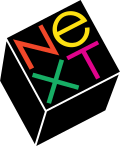NeXT creates WebObjects
WebObjects was created by NeXT Software, Inc., first publicly demonstrated at the Object World conference in 1995 and released to the public in March 1996. The time and cost benefits of rapid, object-oriented development attracted major corporations to WebObjects in the early days of e-commerce, with clients including BBC News, Dell Computer, Disney, DreamWorks SKG, Fannie Mae, GE Capital, Merrill Lynch, and Motorola.
Apple acquires NeXT, and continues to maintain the software
Following NeXT's merger into Apple Inc. in 1997, WebObjects' public profile languished. Many early adopters later switched to alternative technologies, including Apple which had been the last remaining large client for the software, relying on it to power parts of its online Apple Store and the iTunes Store –which was WebObjects' highest-profile implementation at the time.
WebObjects was part of Apple's strategy of using software to drive hardware sales, and in 2000 the price was lowered from $50,000 (for the full deployment license) to $699. From May 2001, WebObjects was included with Mac OS X Server, and no longer required a license key for development or deployment.
WebObjects transitioned from a stand-alone product to be a part of Mac OS X with the release of version 5.3 in June 2005. The developer tools and frameworks, which previously sold for US$699, were bundled with Apple's Xcode IDE. Support for other platforms, such as Windows, was then discontinued. Apple said that it would further integrate WebObjects development tools with Xcode in future releases. This included a new EOModeler Plugin for Xcode. This strategy, however, was not pursued further.
In 2006, Apple announced the deprecation of Mac OS X's Cocoa-Java bridge with the release of Xcode 2.4 at the August 2006 Worldwide Developers Conference, and with it all dependent features, including the entire suite of WebObjects developer applications: EOModeler, EOModeler Plugin, WebObjects Builder, WebServices Assistant, RuleEditor and WOALauncher. Apple had decided to concentrate its engineering resources on the runtime engine of WebObjects, leaving the future responsibility for developer applications with the open-source community. The main open-source alternative –the Eclipse IDE with the WOLips suite of plugins –had matured to such an extent that its capabilities had, in many areas, surpassed those of Apple's own tools, which had not seen significant updates for a number of years.
Apple promised to provide assistance to the community in its efforts to extend such tools and develop new ones. In a posting to the webobjects-dev mailing list, [2] Daryl Lee from Apple's WebObjects team publicly disclosed the company's new strategy for WebObjects. It promised to "make WebObjects the best server-side runtime environment" by:
- Improving performance, manageability, and standards compliance
- Making WebObjects work well with Ant and the most popular IDEs, including Xcode and Eclipse
- Opening and making public all standards and formats that WebObjects depends upon
WebObjects 5.4, which shipped with Mac OS X Leopard in October 2007, removed the license key requirement for both development and deployment of WebObjects applications on all platforms. All methods for checking license limitations were then deprecated.
The end of WebObjects, and the beginning of Project Wonder
In 2009, Apple stopped issuing new releases of WebObjects outside Apple. The community decided to continue development with Project Wonder, an open-source framework which is built on top of the core WebObjects frameworks and which extends them. For example, Project Wonder has updated development tools and provides a REST framework that was not part of the original WebObjects package.
Though once included in the default installation of Mac OS X Server, WebObjects was no longer installed by default starting with Mac OS X Snow Leopard Server and shortly after, Apple ceased promoting or selling WebObjects. As of 2016, WebObjects is actively supported by its developer community, the "WOCommunity Association", by extending the core frameworks and providing fixes with Project Wonder. The organization last held a Worldwide WebObjects Developer Conference, WOWODC, in 2013. [3] [4]
In May 2016, Apple confirmed that WebObjects had been discontinued. [1]

